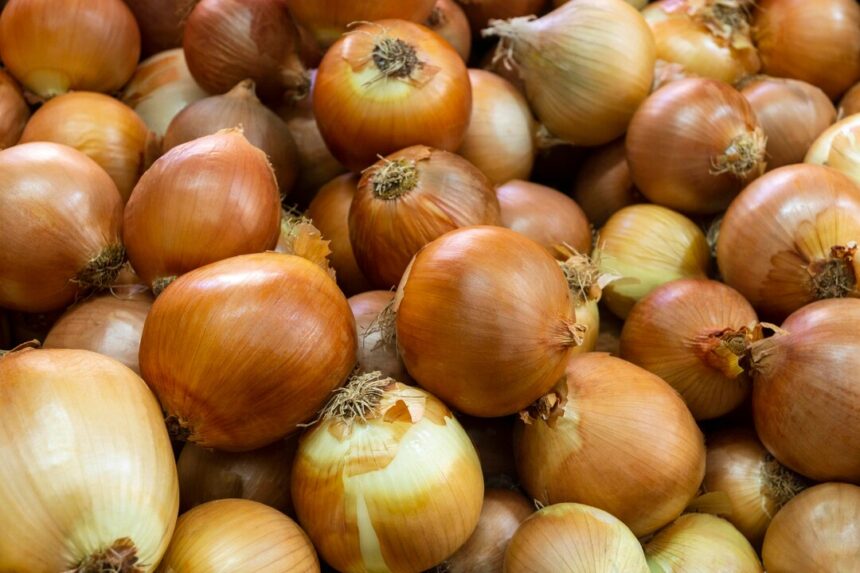Onions are a staple crop in South Africa, valued for their culinary versatility, nutritional benefits, and economic significance. Whether used as a flavor enhancer in cooking or as a primary ingredient in various dishes, onions play a vital role in the country’s food culture and economy. To meet the growing demand for high-quality onions and maximize yields, it’s essential for farmers to implement techniques that enhance both the quality and quantity of onion production. Here are some effective strategies for optimizing onion production in South Africa:
1. Soil Preparation and Management:
Start with a solid foundation by preparing the soil for onion cultivation. Conduct soil tests to assess nutrient levels, pH, and soil structure, and amend the soil as needed to optimize fertility. Onions thrive in well-drained, loamy soil with a pH range of 6.0 to 7.5. Implement soil conservation practices such as mulching and cover cropping to improve soil structure, moisture retention, and nutrient availability.
2. Variety Selection:
Choose onion varieties that are well-suited to the local climate and growing conditions. Consider factors such as bulb size, maturity period, disease resistance, and market demand when selecting varieties. Popular onion varieties grown in South Africa include Granex (or Sweet Spanish), Red Creole, and Texas Grano.
3. Proper Planting Techniques:
Follow best practices for planting onions to ensure optimal growth and development. Plant onion sets or seeds in well-prepared soil at the appropriate spacing and depth. Onion sets should be planted approximately 2 to 3 centimeters deep and spaced 10 to 15 centimeters apart in rows. Proper planting depth and spacing are essential for bulb formation and yield optimization.
4. Irrigation Management:
Provide consistent and adequate moisture to onion plants throughout the growing season to promote healthy growth and bulb development. Implement efficient irrigation techniques such as drip irrigation or furrow irrigation to minimize water wastage and ensure uniform moisture distribution. Monitor soil moisture levels regularly and adjust irrigation schedules as needed based on weather conditions and crop stage.
5. Fertilization:
Apply fertilizers judiciously to meet the nutritional needs of onion plants and optimize yield potential. Conduct soil tests to determine nutrient deficiencies and apply fertilizers accordingly. Onions require nitrogen, phosphorus, and potassium for healthy growth and bulb formation. Consider using organic fertilizers such as compost or manure to improve soil fertility and promote sustainable agriculture practices.
6. Weed Control:
Implement effective weed control measures to minimize competition for nutrients, water, and sunlight. Manual weeding, mulching, and herbicide application are common methods used to control weeds in onion fields. Regular and timely weeding is essential, especially during the early stages of onion growth when weeds can have a significant impact on yield.
7. Pest and Disease Management:
Monitor onion crops regularly for signs of pests and diseases, such as thrips, onion maggots, and fungal infections. Implement integrated pest and disease management strategies, including the use of resistant varieties, cultural practices, biological control agents, and chemical pesticides when necessary. Early detection and intervention are key to preventing pest and disease outbreaks and minimizing yield losses.
8. Bulb Formation and Maturation:
Monitor onion plants as they mature and approach harvest readiness. Pay attention to signs of bulb formation, such as swelling of the neck and yellowing of the foliage. Avoid overwatering or excessive nitrogen fertilization during the later stages of growth, as this can delay bulb maturation and reduce bulb quality.
9. Harvesting and Post-Harvest Handling:
Harvest onions when the tops have dried and bent over naturally, indicating maturity. Use sharp tools to lift onions from the soil without damaging the bulbs. Allow harvested onions to dry in the field for a few days before removing tops and roots and storing them in a cool, dry, well-ventilated area. Proper post-harvest handling is crucial for maintaining onion quality and extending shelf life.
10. Continuous Learning and Improvement:
Stay informed about the latest research, technologies, and best practices in onion production. Participate in training programs, workshops, and extension services offered by agricultural organizations and government agencies. Exchange knowledge and experiences with fellow farmers and researchers to continually improve onion production techniques and enhance overall productivity and profitability.
By implementing these techniques for enhancing quality and yield in onion production, farmers in South Africa can maximize the potential of this valuable crop and contribute to food security, economic development, and livelihood improvement in their communities. With careful planning, proper management, and continuous innovation, onion production has the power to transform agricultural landscapes and improve the lives of millions of people across the country.
Join 'Farmers Mag' WhatsApp Channel
Get the latest Farming news and tips delivered straight to your WhatsApp
CLICK HERE TO JOIN






